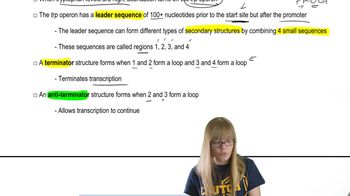What is the likely effect of each of the following mutations of the trpL region on attenuation control of trp operon gene transcription? Explain your reasoning.
Two nucleotides are inserted immediately following the polypeptide start codon.
 Verified step by step guidance
Verified step by step guidance Verified video answer for a similar problem:
Verified video answer for a similar problem:

